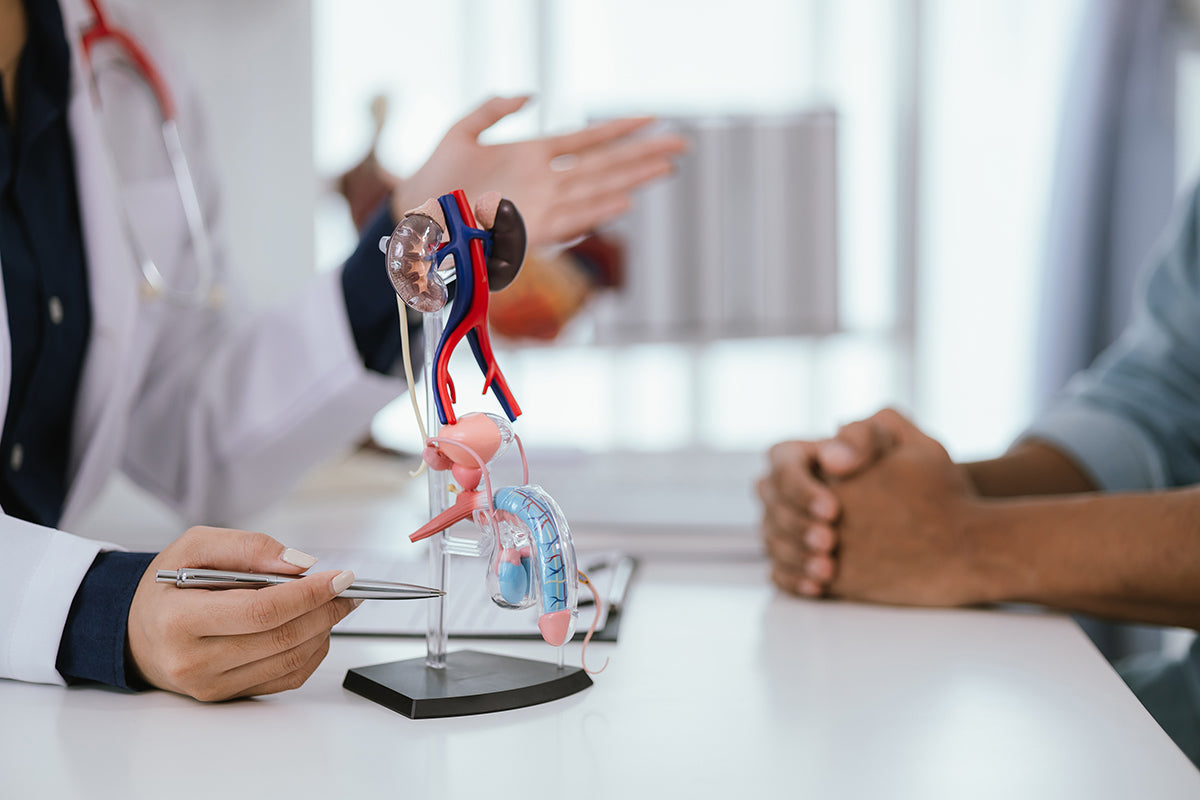
Testicular cancer: when testicles' cells grow out of control
|
|
Time to read 3 min
|
|
Time to read 3 min
Testicular cancer is a type of cancer that begins in the testicles, part of the male reproductive system. In adult men, the testicles are typically slightly smaller than a golf ball and are contained within a skin sac called the scrotum.
More than 90% of testicular cancer develop in specialized cells known as germ cells, which produce sperm. The two main types of germ cell tumors in men are:
These two types occur at approximately equal rates. Many cases of testicular cancer contain both seminoma and non-seminoma cells. These mixed germ cell tumors are treated as non-seminomas because they grow and spread like non-seminomas.
In addition, there is a less common type of testicular cancer:
It is crucial to distinguish between the different types of testicular cancer because their treatments and prognoses vary.
Scientists have identified a few risk factors that make some individuals more likely to develop testicular cancer. However, most children and men with testicular cancer have no known risk factors.
Risk factors for testicular cancer include:
The main signs and symptoms of testicular cancer may include:
Other symptoms, more likely caused by conditions other than testicular cancer, include:
Non-cancerous conditions, such as testicular injury or inflammation, can also cause symptoms similar to those of testicular cancer. Inflammation of the testicle (orchitis) and epididymis (epididymitis) may cause testicular swelling and pain, often due to viral or bacterial infections.
When the tumor is confined to the testicle (stage I), the 5-year survival rate is approximately 99%. If classified as regional (stage II or III, meaning the cancer has spread to nearby lymph nodes or tissues), 96 out of 100 people survive the next five years. However, if the cancer spreads to distant organs or lymph nodes, this probability drops to 73%.
These statistics show that testicular cancer is less lethal than other cancers, such as lung or pancreatic cancer. Nonetheless, it should not be underestimated due to the potential harm to an individual’s health.
IMPORTANT: EARLY DIAGNOSIS IS CRITICAL. CANCER IDENTIFIED IN ITS EARLY STAGES—BEFORE IT GROWS TOO LARGE OR SPREADS TO OTHER AREAS OF THE BODY—HAS A MUCH HIGHER CHANCE OF SUCCESSFUL TREATMENT. CONVERSELY, ONCE CANCER HAS METASTASIZED TO OTHER ORGANS, TREATMENT BECOMES MORE CHALLENGING, AND SURVIVAL RATES DROP SIGNIFICANTLY.
Testicular cancer is often discovered due to symptoms experienced by the patient or during evaluations for other conditions.
A physician typically performs a physical examination, checking for swelling, tenderness, and the size/location of any lumps in the testicles. The abdomen, lymph nodes, and other body areas are also examined for signs of cancer spread.
The most common diagnostic methods for testicular cancer include:
As with many cancers, the earlier testicular cancer is detected, the sooner treatment can begin, and the more effective it is.
Some men with testicular cancer have no symptoms, and the cancer is discovered during medical tests for other conditions. Occasionally, imaging tests performed for infertility issues reveal small testicular cancers.
Testicular cancer is cancer that starts in the testicles (the part of the male reproductive system that is typically a little smaller than a golf ball in adult men and is contained within a sac of skin called the scrotum).
More than 90% of testicular cancers develop in special cells known as germ cells, the cells that make sperm.
Many testicular cancers contain both seminoma and non-seminoma cells.
Risk factors for testicular cancer typically include HIV infection or having an undescended testicle, among others.